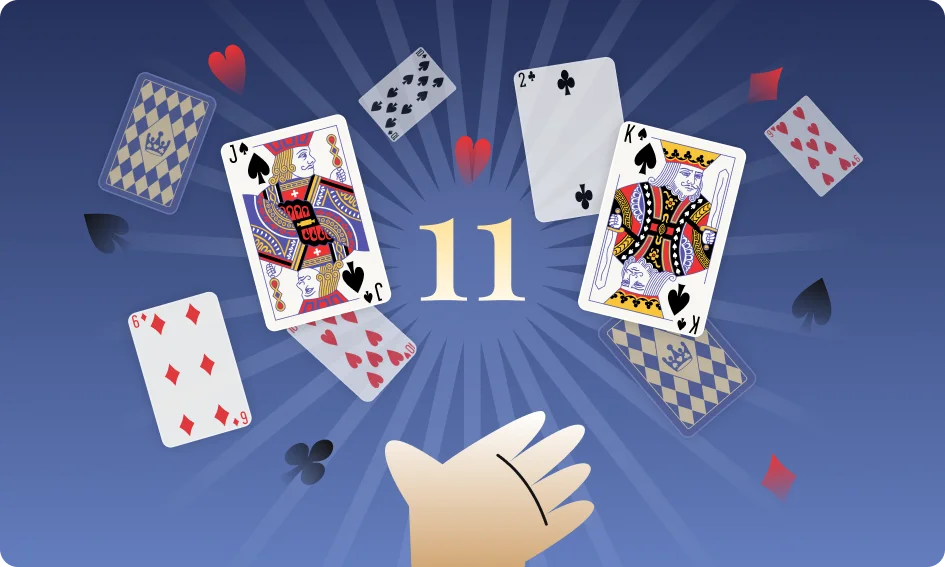Despite numerous card games circulating the online space, Solitaire holds a special place in my heart. I clearly recall the first time I booted up my folk’s computer to explore this new device. There weren’t many exciting ways to pass the time on those old box-like computers. I did, however, find Solitaire – a game that really caught my attention.
I had to learn by trial and error because I couldn’t find any Solitaire guides. I remember just clicking on random cards in the hope of finding a viable move. The digital space has changed a lot.
When I found out that thesolitaire.com had released a new Solitaire platform, I had to give it a shot. The team at thesolitaire.com has developed a wonderful website, one that is incredibly easy to learn and navigate. Here is a quick guide to playing the great game of Solitaire.
History and Background
Before we navigate through the intricacies of Solitaire and the strategies you can use to improve, let’s take a quick journey through the history of the game. Interestingly, Solitaire was initially a form of fortune-telling. It emerged from the Baltic countries in the 18th century and has undergone numerous iterations and spawned many variations.
| Feature | Detail |
| Origin | 18th century |
| Game type | Strategy and skill |
| Microsoft Windows debut | 1990 |
| Standard deck | 52 cards |
| Variations | Numerous variations (e.g., Spider, Freecell, Klondike) |
Solitaire at thesolitaire.com – How to Play

The folks at thesolitaire.com have kept things simple. You don’t have to relearn any complex rules when you play your favorite game on the platform. In any event, it’s a good idea to refresh one’s memory from time to time. So, here’s a look at the basics. I’ll focus on the online version of Solitaire.
The Setup
In a traditional Solitaire setup, there are 52 cards laid out in three different piles.
- The Layout: At the lower half, you’ll find seven different piles or columns of cards. The first column will have one card, face-up. The second column will have two cards, with only one face-up. This pattern will continue up until the seventh column, where there are seven cards, with one face-up.
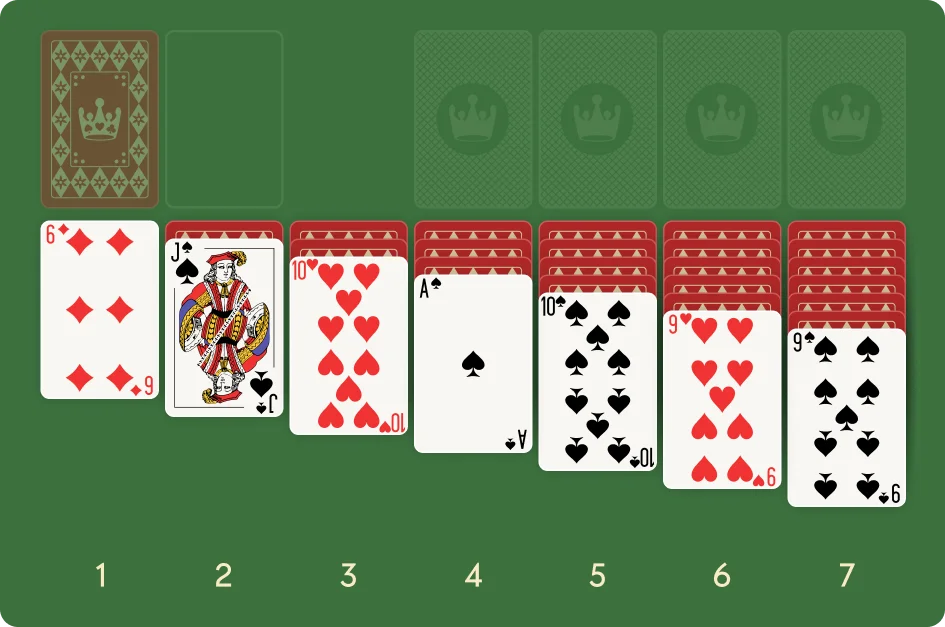
- The Stock Pile: The stock pile is a deck of face-down cards. You can draw one card at a time. If you spot an opportunity to put one of these cards on any of the other piles, then you should. Personally, I don’t like clicking the stock pile too much. It makes me feel somehow inefficient. It turns out that the best way to handle the stock pile is to have a mental catalog of all the cards it contains (once you’ve cycled through it).
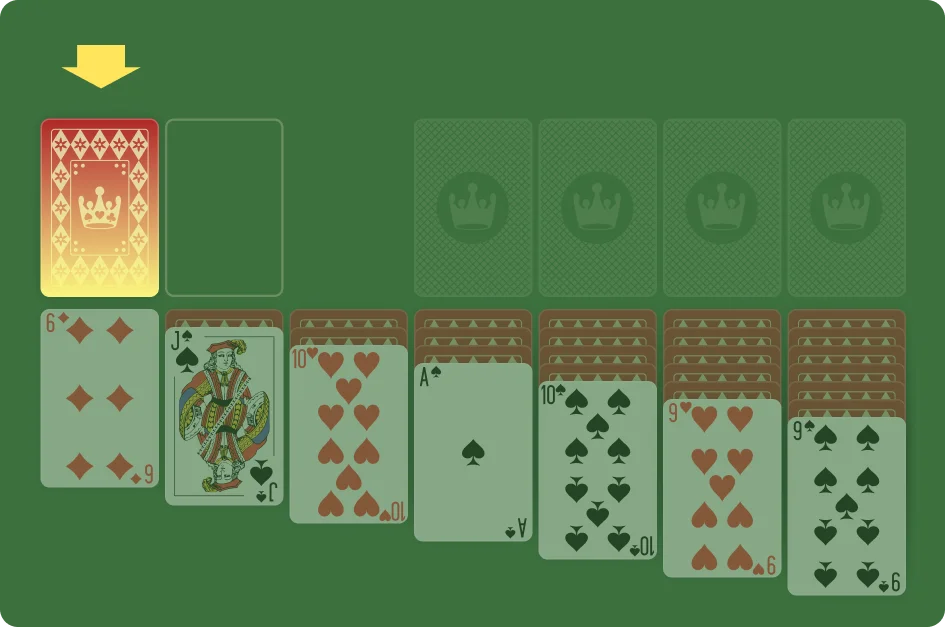
- The Foundation Piles: A deck of 52 cards has seven suits divided into groups of 13 cards. The end goal is to fill the foundation piles with the four different suits in order from lowest to highest (Aces to Kings). All you really need to know is that you should click the next lowest card in the order when it’s available.
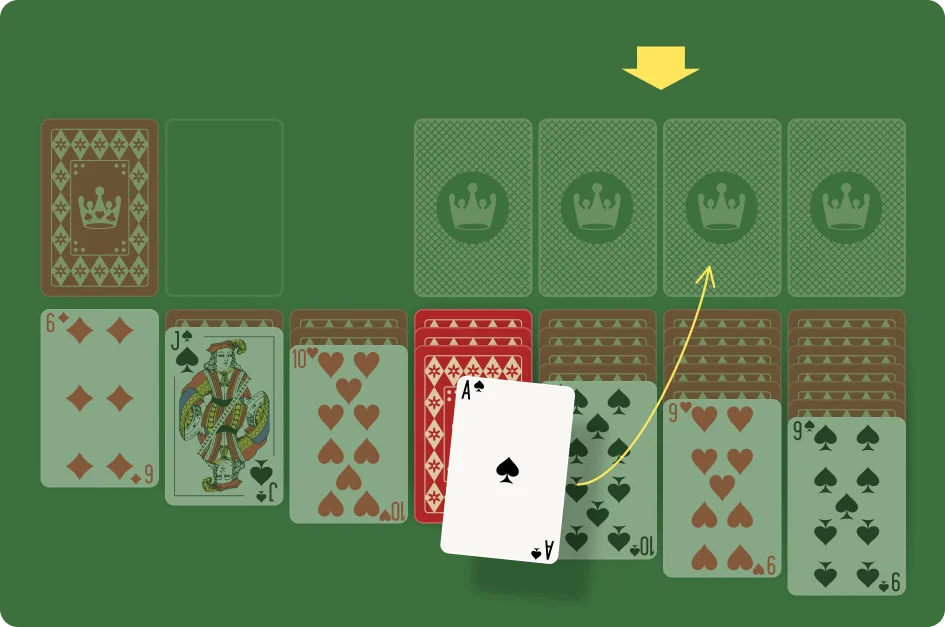
Gameplay
Now, let’s move on to the gameplay. As mentioned, the goal in Solitaire is to complete the foundation piles with all 52 cards (13 per pile). If you’d really like to challenge yourself, then you can try to accomplish the goal in the least number of turns or within a certain time limit.
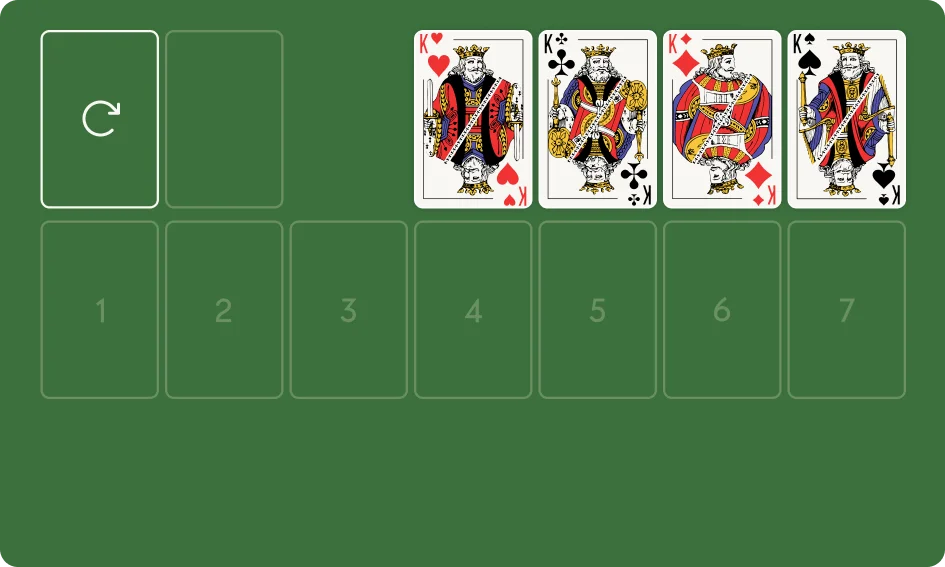
A key aspect of learning how to play Solitaire is understanding how to use the layout or tableau columns. Here, you can only arrange cards in alternating colors. They must also be in descending order. What does this mean? Well, let’s say there’s a red Nine at the bottom of one of the layout columns. You can only place a black Eight on it, and then a red Seven, and so on.
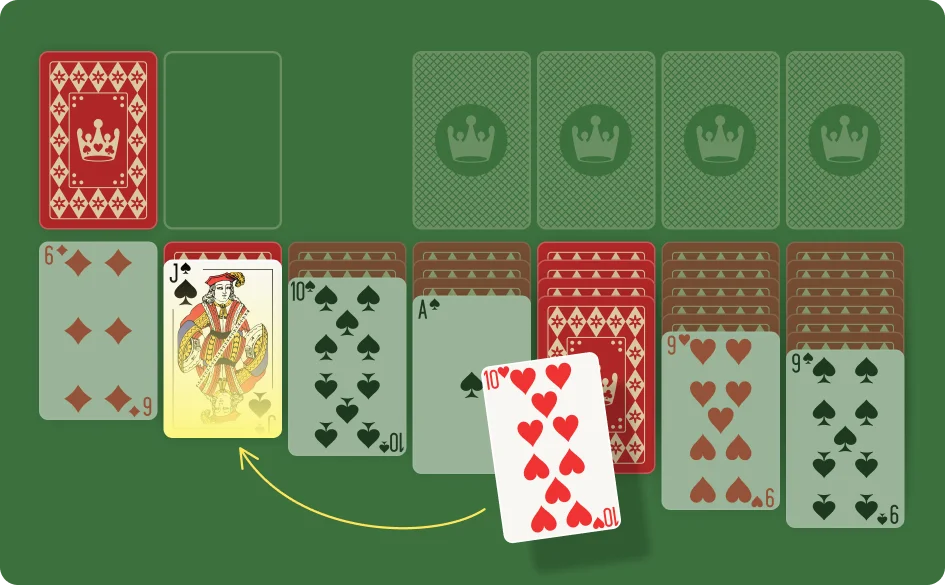
The purpose of arranging cards on the layout is so that you can quickly transfer them to the foundation piles. Take a scenario where the layout is neatly arranged into four columns of 13 cards. Now, you can directly add each card to its foundation pile in sequence without having to overthink things.
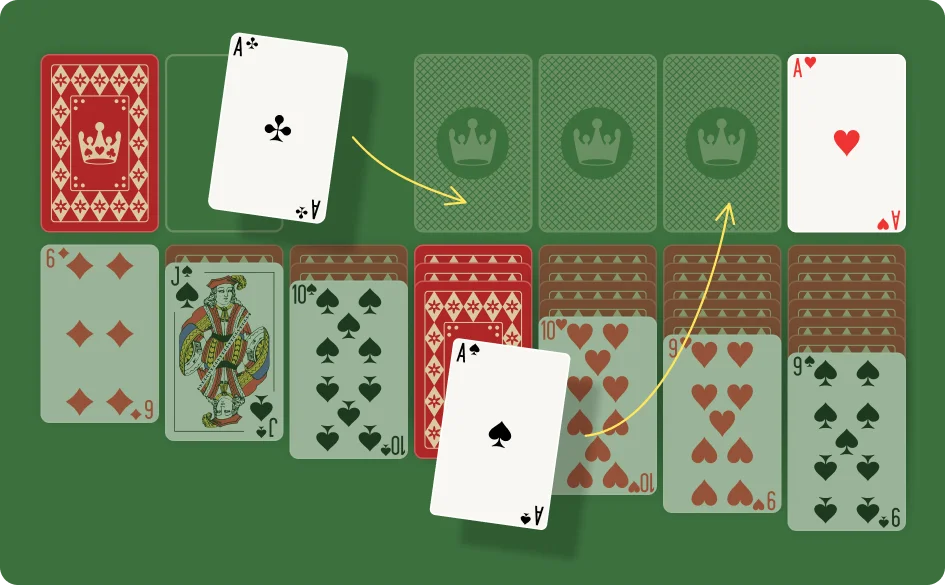
Remember to draw from the stock pile when you feel that there aren’t any cards you can move around. This allows you to be more flexible. You can directly transfer cards from the stock pile to the foundation piles when there are no moves in the layout piles (i.e. the tableau columns).
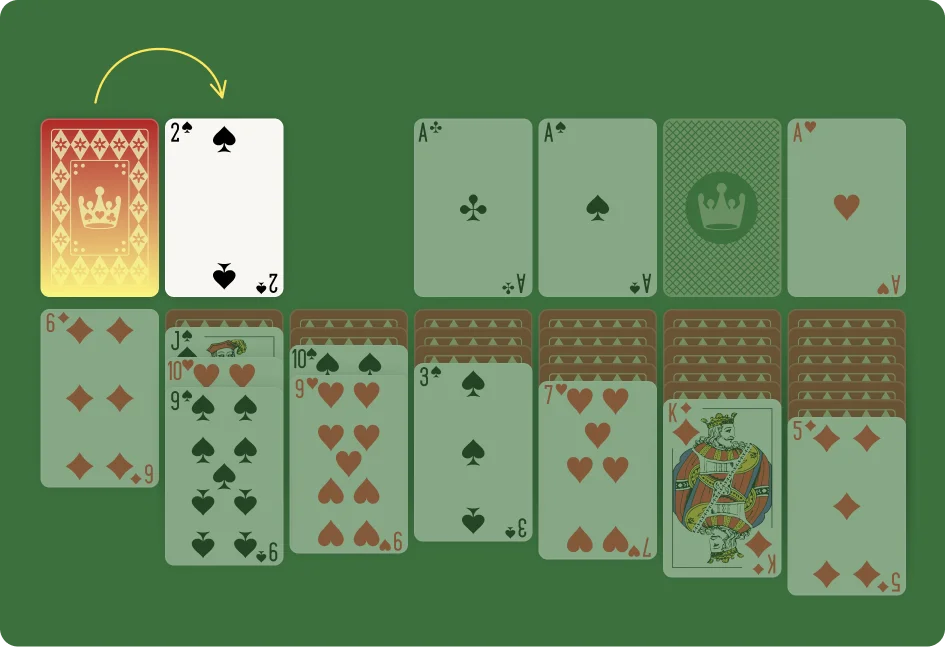
1-Turn Versus 3-Turn Modes
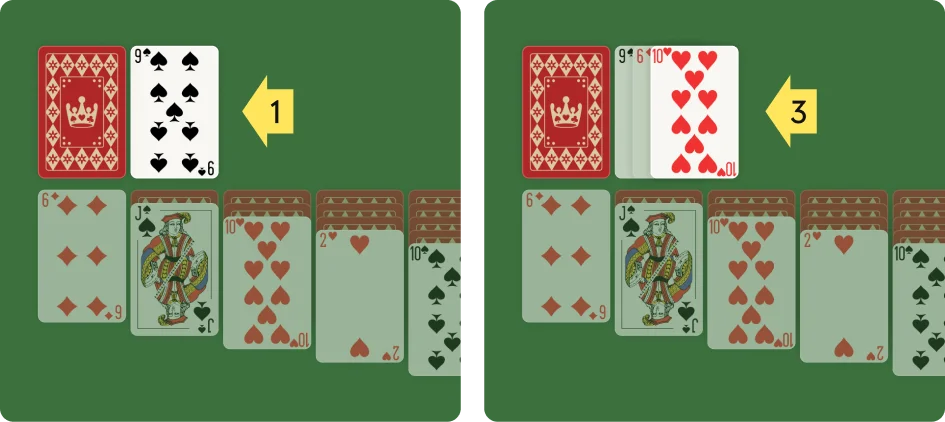
You can actually play Solitaire in two ways: the 1-Turn mode and the 3-Turn mode. The only difference between these two modes relates to how you draw cards from the stock pile. In 1-Turn, you only draw one card, which you can immediately place onto other piles (if there’s a legal move). 3-Turn is a little more challenging because you draw three cards from the stock pile each time you click it. The catch is that you can only use the topmost of those three cards. The ones below can only be used once those on top have been removed.
General Tips and Tricks
Once you understand the rules, learning how to play Solitaire is actually quite simple, as long as you remain cognizant of the basics. That said, there are some tips and tricks you can keep in mind as you venture into the world of this wonderful game called Solitaire.
Move Low Cards to the Foundation Piles
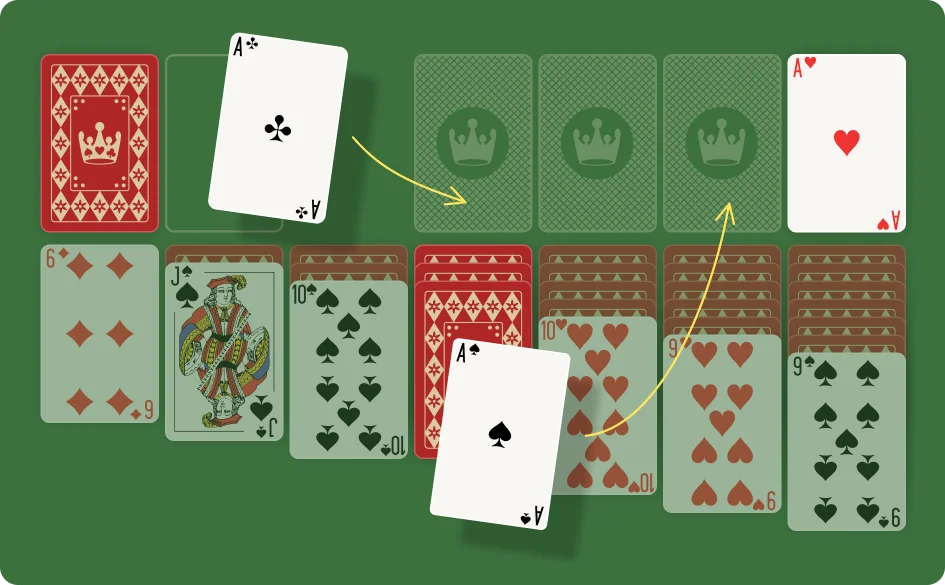
Low cards like Aces and Deuces can almost always go to the foundation piles without a second thought. So, get these cards out of your hand and onto the foundation piles quickly. You’re essentially clearing out the easiest chores first so you have less to worry about later.
Reveal Hidden Cards When You Can
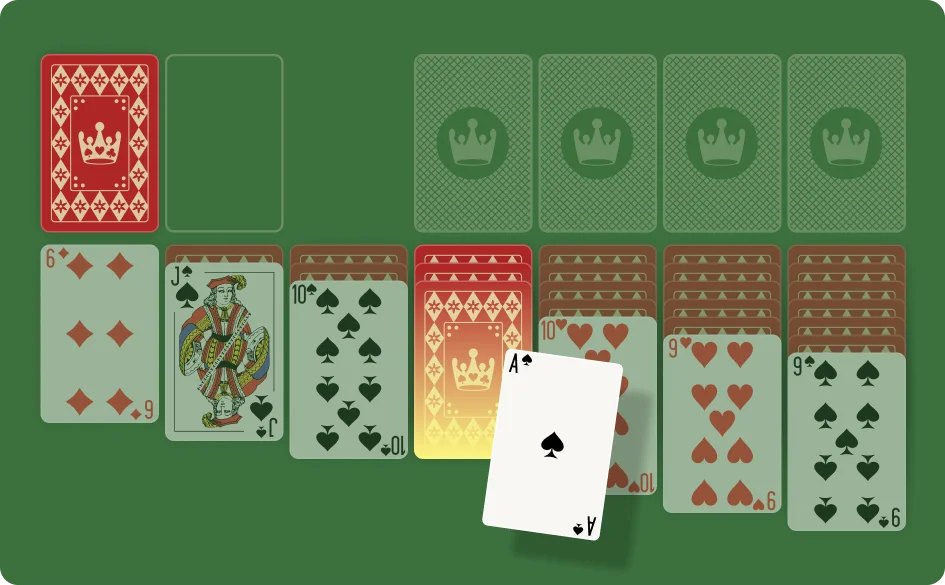
Think of the face-down cards in the layout (those seven piles) as an opportunity to get your hands on a new card. Whenever you have the chance, try to reveal these hidden cards. You never know what you might find; it could be just what you need.
Manage the Stock Carefully
The stock pile is like your reserve stash. You don’t want to use it all at once. Sometimes, it’s better to hold off on using a card right away. Wait until it will really help you make more moves; otherwise, you’re better off making available moves on the layout.
Keeping Layout Piles Open
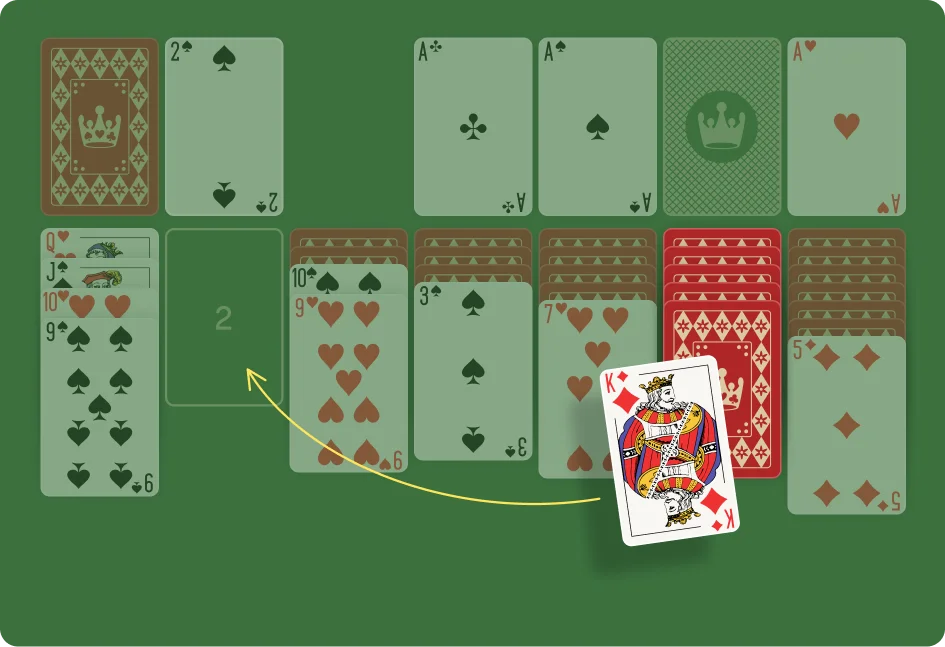
Whenever you get the chance to clear out a layout pile, you can fill it with a King. This will allow you to start uncovering those face-down cards and eventually fill the foundation piles.
Do’s And Don’ts
Here’s a quick guide to some Solitaire do’s and don’ts. You can refer to it whenever you’re in a jam:
| Tip | Strategy |
| Prioritize low cards | Move Aces and Deuces to the foundation piles quickly. |
| Reveal hidden cards | Focus on uncovering face-down cards in the layout. |
| Stock pile management | Use the stock pile wisely; don’t rush to use all the cards it contains. |
| Clear layout piles | Clear away layout piles when possible to start new sequences. |
| Alternating colors | Arrange cards in the layout in descending order and alternating suits. |
| Use the undo option | Use the undo option strategically to correct mistakes. |
| Plan ahead | Plan moves ahead, considering how each one will affect your card sequences. |
| Use hints wisely | Use hints for guidance, but don’t rely on them entirely. |
Conclusion
Now that you’ve learned how to play Solitaire, hop on to thesolitaire.com and give it a shot! Thesolitaire.com has made things easy to grasp while ensuring that the game doesn’t lose that nostalgic feel we all know and love.




